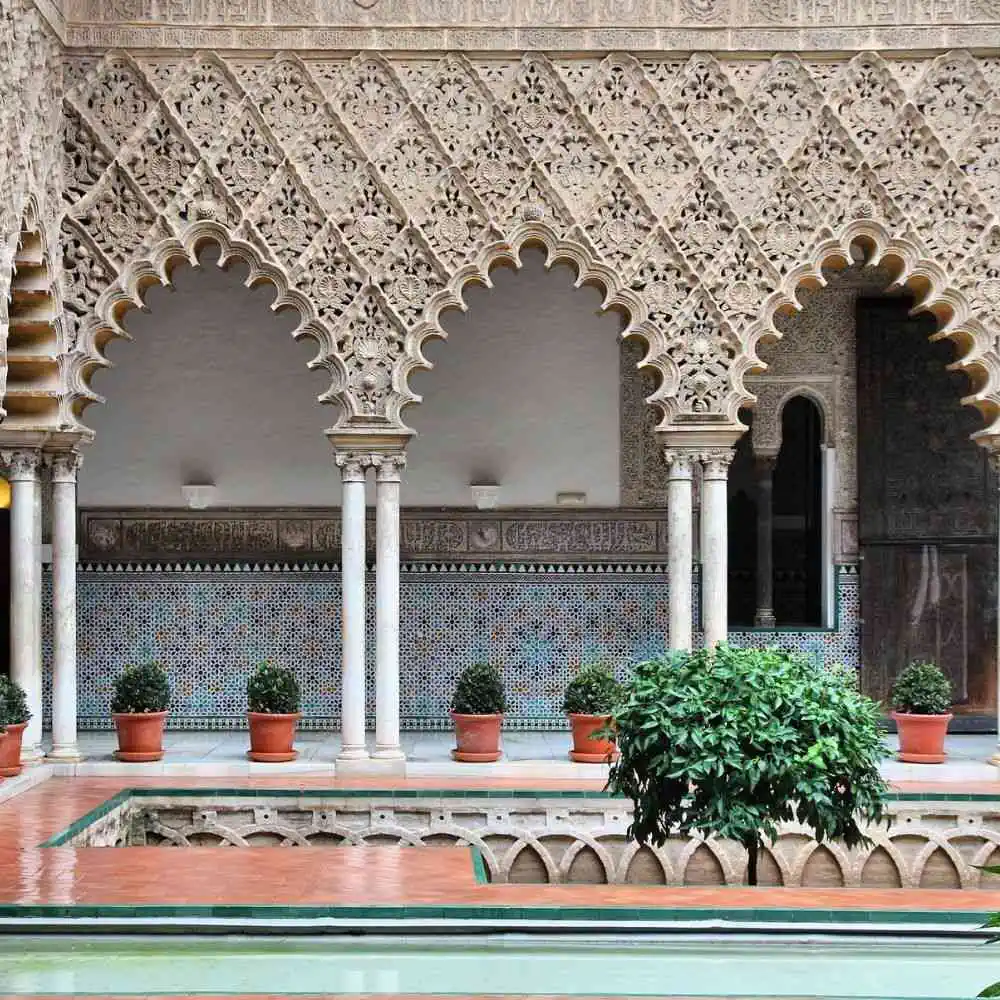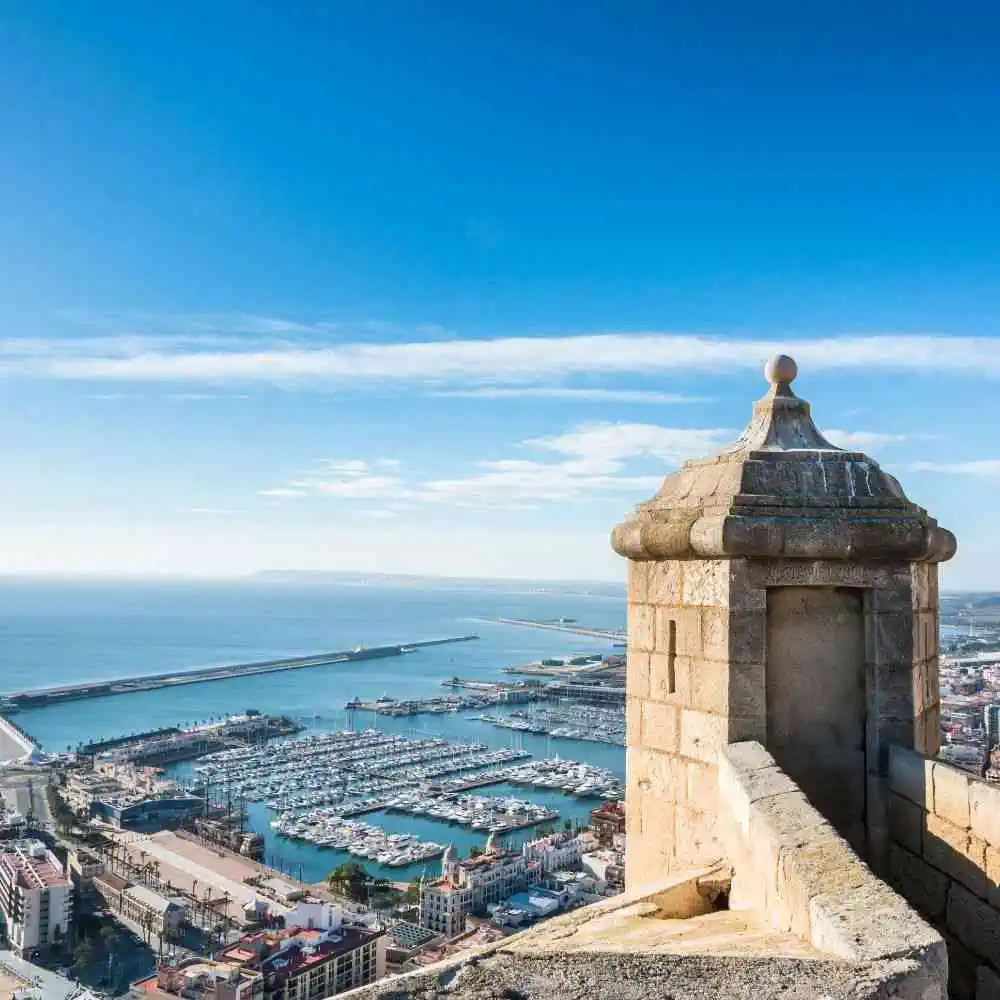You will depart from Alacant Terminal, located right in the city center of Alicante, and enjoy the beautiful scenery of the journey while you arrive in Sevilla Santa Justa, also located in the heart of Seville.
Trains from Alicante to Sevillefrom € 80.00
Trains from Alicante to Seville
Travelling by train: Alicante - Seville
Are you searching for an exciting adventure to explore the diverse beauty of Spain? Look no further! Embark on a thrilling train journey from Alicante to Seville, and prepare to be captivated by the stunning landscapes, historic cities, and unique cultural experiences along the way.
The fastest route from Alicante to Seville takes you through the heart of Spain, covering a distance of approximately 430 kilometers. The journey begins at Alicante Terminal Station, which serves as the main transportation hub for both domestic and international travelers. As you board the train, the anticipation begins to build, knowing that a remarkable voyage awaits.
During this thrilling ride, you'll have the opportunity to visit several magnificent cities and towns along the route. First, the train will transport you to the charming city of Murcia, known for its beautiful squares, intricate architecture, and mouthwatering cuisine. Next, you'll venture through the historic city of Granada, famous for the breathtaking Alhambra palace and the vibrant Albaicín neighborhood.
Continuing your adventure, the train will pass through the captivating city of Cordoba, renowned for its mesmerizing Mezquita, a striking architectural masterpiece merging both Islamic and Christian influences. Finally, you'll arrive at your enchanting destination, Seville, the capital of Andalusia and home to iconic landmarks such as the majestic Plaza de España, the awe-inspiring Cathedral, and the vibrant neighborhood of Triana.
Throughout this scenic journey, keep an eye out for the iconic orange groves that flourish in this region, their sweet fragrance filling the air. As you reach Seville, you'll be greeted by the soulful melodies of flamenco and immersed in a city that pulsates with life and rich historical heritage.
In conclusion, traveling by train from Alicante to Seville offers an unforgettable experience filled with breathtaking landscapes, fascinating cities, and cultural wonders. Embrace the beauty of Spain as you embark on this remarkable adventure, creating memories that will linger long after your journey ends. So, pack your bags, hop on board, and let the magical allure of Alicante and Seville mesmerize you!

Journey details
How long does the train from Alicante to Sevilla take?
The journey time can vary, but on average, the train takes approximately 5 hours and 30 minutes.
What is the fastest journey from Alicante to Sevilla by train?
The fastest train journey from Alicante to Sevilla can take about 5 hours and 20 minutes.
How much does the train cost from Alicante to Sevilla?
The price for a train ticket from Alicante to Sevilla can vary, but it starts at approximately €40.
How much does the Alicante to Sevilla?
No, there are no direct trains from Alicante to Sevilla; a change is usually required.
What is the distance from Alicante to Sevilla by train?
The distance by train between Alicante and Sevilla is approximately 540 Km.
Which are the cities that the train stops from Alicante to Sevilla?
The train from Alicante to Sevilla often stops in Madrid, among other cities, depending on the route taken.
Buy train tickets from Alicante to Seville
Traveling by train from Alicante to Seville is an easy and comfortable journey. RailClick is the best way to travel Europe by train.
Alicante: Places to see
Alicante is the capital of the Valencian Community, a region in southeastern Spain. This stunning seaside city is filled with Mediterranean charm, boasting golden sand beaches, picturesque promenades, and historical architecture. From Roman ruins to vibrant markets, there's plenty to see and explore in Alicante. Here's a list of the must visit sites and experiences when visiting this beautiful Mediterranean city.
Castillo de Santa Bárbara : This imposing 9th-century castle towers over the city, offering sweeping views of the coastline. Climb the staircases to the top and indulge in some cultural and historical experiences as you explore the Alcazaba, the keep, cannons, and the ancient ward. The castle stands on top of Mount Benacantil, and can be accessed by a cable car located near the harbor.
Explanada de España: This vibrant waterfront promenade is lined with delightful cafes, restaurants, and bars. The elaborate tiles and benches make it a pleasant place to stroll. At night, the lights on the pier create a beautiful romantic atmosphere.
Museo Arqueológico Provincial de Alicante: This museum boasts a vast collection of prehistoric artifacts, including tools, pottery, and jewelry found on the south coast of Alicante. It is an important source for archaeological and historical studies. It is located on Calle Rambla de Méndez Núñez and is open from Tuesday to Sunday.
Mercado Central de Abastos: This bustling market has been a major center of food trade in Alicante since the 19th century. It offers everything from fresh seafood to fruits, spices, and local specialties. Try the espetos de sardinas (grilled sardines) and paella.
Basilica de Santa Maria: This beautiful 16th-century baroque-style church located on Plaza de Santa María is one of the most important religious monuments in Alicante. Inside, you can find a Roman sculpture of Santa María from the 13th century, as well as a beautiful tiled floor.
Parque de La Ereta: This stunning park located at the foothills of Mount Benacantil is a great place for relaxation. It's filled with gardens, pavilions, and lots of green spaces. In the center, there's a neoclassical-style manor house which hosts a variety of activities and events.
Gran Teatro de El Corte Inglés: This elegant theater in downtown Alicante is one of the city's main cultural venues. It hosts a variety of theatrical performances and operas, so make sure to book tickets in advance.
Alicante is a great destination for travelers looking for a mix of history, culture, and fun. There is plenty to explore and experience in this charming Spanish city. From historical monuments to traditional markets and lush parks, you're sure to have an unforgettable trip!

Seville: Places to see
Seville (Sevilla) is a stunningly beautiful city in southern Spain, full of culture, vibrant colours and an illustrious history. With its Moorish palaces, gothic churches, vibrant local cuisine and sandy beaches, it is no wonder that it has earned its reputation as an essential destination for any traveller. Here is a list of the must-visit historical and architectural sites in Seville, with tips and information on the best places to see, what to eat, and how to get around.
The Real Alcazar: This stunning Moorish palace, a UNESCO world heritage site, is the oldest royal palace in all of Europe still in use today. It is located in Old Town, with stunning courtyards, lush gardens, and beautiful architecture. It is open from 9.30am to 5pm (6pm during summer months) and tickets cost €8.50. Insider tips – to avoid queues, book tickets online in advance!
The Giralda Tower: Part of the city’s cathedral complex, the Giralda Tower is the symbol of Seville. This iconic bell tower is 343 feet high and offers stunning views of the city. It is open from 10am to 6pm (7pm during summer months) and tickets cost €6. Insider tip – try to go early morning to avoid the crowds!
Metropol Parasol: This spectacularly unique piece of architecture, nicknamed “Las Setas” for its mushroom-like shape, is one of the world’s largest wooden structures. Located in Plaza de la Encarnación, it is open from 10am to 8pm (9pm in summer), and admission is free. Insider tip – visit it at night and admire the illuminated view!
Maria Luisa Park: This sprawling park is a great place to explore Seville’s unique flora and fauna. It has a range of different attractions from ponds to gardens, as well as some of the city’s most recognisable sculptures. It is open until 8pm and admission is free. Insider tip – rent a bicycle and explore the park at your own pace!
Plaza de España: This remarkable square is one of the city’s main attractions. It is a stunning example of Spanish Renaissance architecture, with its half-moons, towers and gardens providing a unique backdrop for photographs. It is open all day but closes at 8pm and admission is free. Insider tip – take a boat ride along the canal to fully appreciate the square’s beauty!
Triana Market: Home to some of Seville’s most vibrant street life, Triana Market offers a variety of local dishes and delicacies. It is open everyday from 9.30am to 8pm and admission is free. Insider tip – it can get quite crowded so plan your visit in the morning to avoid the crowds!
La Torre del Oro: This iconic 12th-century tower is one of the many monuments that line the banks of the Guadalquivir river. With its Moorish-style architecture, La Torre del Oro is an iconic sight in the city. It is open from 10am to 3pm and admission is free. Insider tip – try to go on a sunny day for the best views!
Seville is a unique city, full of culture and life. It has a rich history, vibrant colours and a wealth of historical and architectural sites to visit. Whether you're looking to explore the numerous sights and flavours of Seville, or just enjoy some sun on the stunning beaches, Seville is the perfect destination for any traveller.

Alicante: Main train stations
Alicante is located in the southeast of Spain and is well known for its network of rail transport. The main station of this city is called Alicante-Terminal, located downtown. This train station provides national connections, as well as international services with destinations such as Madrid, Barcelona or Valencia. There is another important station in Alicante, La Marineta Casiana.
Alicante Terminal Station has many facilities, such as luggage storage, Wi-Fi connection, parking, shops, and ticket office. Its address is Avenida de Salamanca, 2 03015, Alicante, Spain. You can contact the station by calling their telephone, +34 902 320 320. Opening hours are from 6:00 a.m. to 10:30 p.m., from Monday to Sunday.
- Alacant-Terminal
- Aeropuerto Alacant-Altet Bus
- Sant Gabriel
Seville: Main train stations
Seville, Spain's fourth largest city, is home to the main train station, Estación Santa Justa. It is located on the western side of the city, close to many of the city's attractions such as Plaza de España and the cathedral. Although Santa Justa is the main station, there are two other stations in Sevilla: San Bernardo and Cibeles.
Estación Santa Justa is located at Av. Kansas City, s/n, 41005 Sevilla. The station is open 24 hours a day and provides a range of services, including ticket sales, luggage storage and vending machines. Customer service is available during normal opening hours and can be contacted by phone on +34 954 159 555.
- Sevilla
- Sevilla San Bernardo
- Sevilla-Virgen del Rocio
- Bellavista (Sevilla)
Alicante - Seville: How to get the best deals
Book in Advance:
Just like with airfares, train ticket prices tend to rise as the departure date gets closer. Booking weeks or even months in advance can save you a significant amount.
Travel During Off-Peak Hours:
Avoid traveling during peak times such as weekday mornings and evenings. Opt for midday, late evening, or mid-week rides when there's less demand.
Consider Slower Trains or non direct routes:
Express or high-speed trains might save time, but they're often pricier. Opting for regional or slower services can reduce your fare.
Look for Special Deals and Promotions:
Train operators occasionally have promotions or special deals, especially during off-peak seasons. It's worth signing up for newsletters. Additionally, there are sometimes group or return ticket discounts, so consider these options if they fit your travel plans.
- Contact Us


